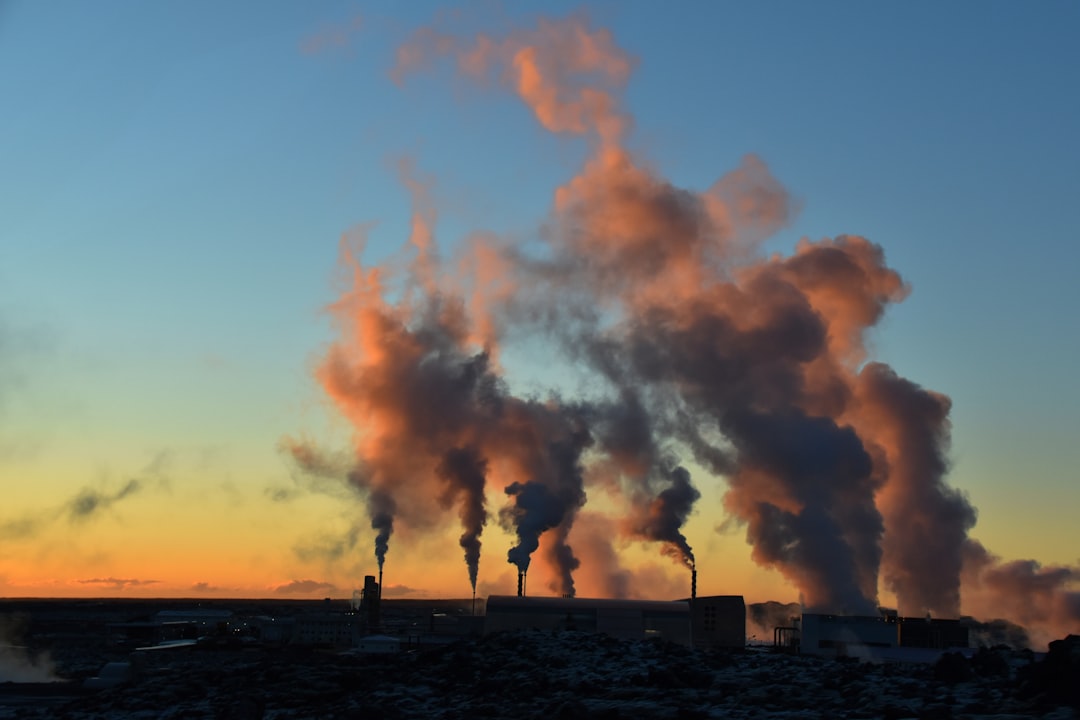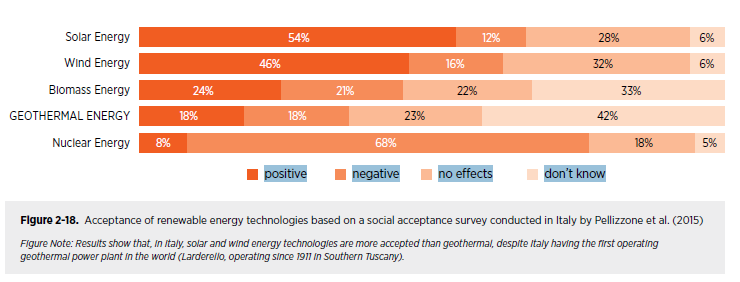🌐 The Realities of Geothermal Energy
Learn the pros and cons of this promising sustainable energy technology in the second edition of our series on geothermal energy.
"As a country we are trying to reduce our carbon footprint and achieve higher penetrations of renewable energy. Geothermal has to be there."
Paul Thomsen of Ormat Technologies

Energy that comes from the Earth is an important — yet underutilized — source of power for the future of human civilization. It can be tapped into using a number of different technologies, which we overview in the first part of our series on geothermal energy. If you haven’t had the chance to read it, check it out!
The technology that draws upon geothermal resources to produce heat and electricity is diverse. As such, the benefits and liabilities of each technology is unique. We will cover the more generalized positive and negative attributes of geothermal energy — however, if we missed any, please let us know!
A Reliable Baseload Power
A huge argument for further utilization of geothermal energy is the fact that’s it’s an incredible baseload power, aka a consistent energy source. Other types of popular renewable energies, like wind and solar, produce a large amount of energy — but their storage technology lacks. So during the times that wind and solar produce less energy, other energy must supplement. Fossil fuel companies argue that this is where oil and gas must come in.
Luckily other renewable energies can be used as a baseload power — including geothermal energy! It comes from the Earth, making it consistent (or in technical terms, has a high capacity factor). Geothermal power plants can choose when to use the energy or not, and it never runs out of “fuel.” Due to its high capacity factor, it can actually generate 2-4 times more electricity than a wind or solar plant of the same production level.
Plus, geothermal resources are basically everywhere. Most households can install geothermal heat pumps underneath their homes, and Enhanced Geothermal Systems (EGS) can provide geothermal energy almost anywhere.
Therefore, geothermal energy can be used as a baseload power for both the electricity grid, heating and cooling houses, and supporting other industries, including:
Hydrogen production
Bitcoin mining
Direct air capture
Food production.
Environmental Impacts
Like any energy source, we must consider the environmental impacts. We’ve gone through a few of the positive and negative impacts of geothermal energy below — however, if we’ve missed any, make sure to leave us a comment adding your thoughts.
Positive
Geothermal power plants require less land, water, and resources than fossil fuels, and even other types of renewable energy. Depending on the kind, they produce between 0-80 CO2 kg/MWh and negligible pollutants and particulates. They are much better for air quality than fossil fuels, and comparable to or better than other renewables.
Geothermal heat pumps are especially eco-friendly. They consume 20-40% less energy than conventional heating/cooling systems, all while reducing utility bills.
Negative
While geothermal power plants attempt to reduce water loss by employing closed systems, in some cases, like with flash and dry steam plants, water is loss through steam. This can potentially damage natural systems, which is why areas like Yellowstone National Park are protected from development.
Other potential environmental issues include:
Minor earthquakes
Injury from getting stuck in equipment or burns from piping
Soil erosion
Disruption of aquatic biomes
Light and sound pollution.
Social Impacts
Unfortunately, the public’s awareness around geothermal energy is much lower than for other renewable energy producers. And due to media coverage, cultural disruptions, or disinformation, the public opinion on geothermal energy is varies widely.
However, social acceptance both globally and locally is a requirement for further development of geothermal technologies.
Economic Benefits
Geothermal power directly improves local communities. Plants pay federal, state, and local taxes, in addition to property taxes. They provide valuable revenue and employment in rural areas where geothermal plants often operate. In fact, the U.S. Department of Energy predicts that EGS development will create the majority of U.S.-based jobs by the end of 2050.
Geothermal plants can also improve the quality of life through development, including improved electricity, communications, roads, water supply, and sewage. They can provide stability, education, and community.
When People Aren’t Considered

Geothermal energy, while potentially the key to a fossil fuel-free world, comes with its skeletons. In the past, companies have ignored the needs of local people. Issues have included:
Displacement and disputes over land and indigenous rights
Short-term disruptions like traffic, population increase, noise, odor
Lack of local engagement and consultation
Issues with employment and economic benefits to the local community.
Take Hawaii, for example. The potential for geothermal energy in Hawaii is incredible: the islands are made up of both inactive and active volcanoes, basically limitless heat sources.
Yet, almost 90% of Hawaii’s energy comes from fossil fuels.
Unfortunately, the relationship between geothermal energy and local residents has been shaky since the 1990’s, when local people were exposed to hydrogen sulfide poisoning on the Big Island due to poor power plant management.
In the last decade, groups like the Innovations Development Group have formed to promote geothermal energy to Native Hawaiians and local people. Direct community connections need to continue if geothermal energy is to be a viable and culturally aware industry.
So what is the viability of geothermal energy?
As you can see, geothermal energy has a lot of potential for good — but with great power comes great responsibility.
If we want our future of renewable energy to be both environmentally and socially conscious, a lot needs to be considered. Geothermal companies can bring amazing technology to the table, but need to answer some important questions, like:
How will these companies benefit communities currently lacking resources, like in the midwest U.S.?
What will companies due to prevent harmful environmental impacts?
Have these companies considered Native American land rights when choosing locations?
Have any other questions you’d want to ask a geothermal company? Know anyone who would be great for a feature on geothermal energy? Leave us a comment to let us know.
And make sure to check out our database of the groups doing work in geothermal energy.
Additional Learning Resources
📔Geothermal energy provides a great opportunity for U.S. indigenous peoples
🔉 How to Save a Planet: Party like it’s 2035
📺 Geothermal energy is renewable and powerful. Why is most of it untapped?
🗺️ Think GeoEnergy Power Plant Map
Up Next
In our next articles on geothermal energy, we’ll talk about heating and cooling systems, EGS, and Organic Rankine Cycles. We’ll also be publishing interviews with some experts in the field. Stay tuned!
And make sure to share this article, follow us on social media, and subscribe!






